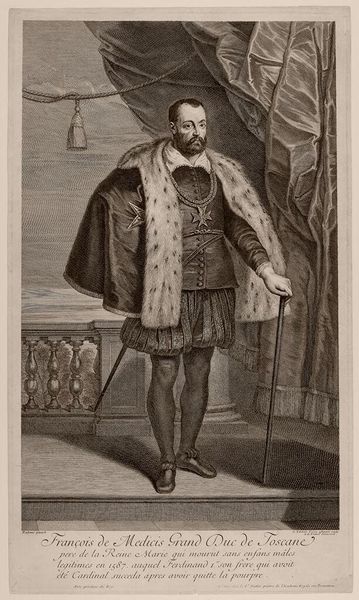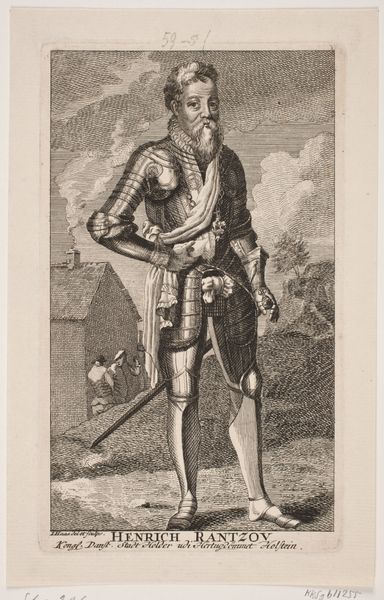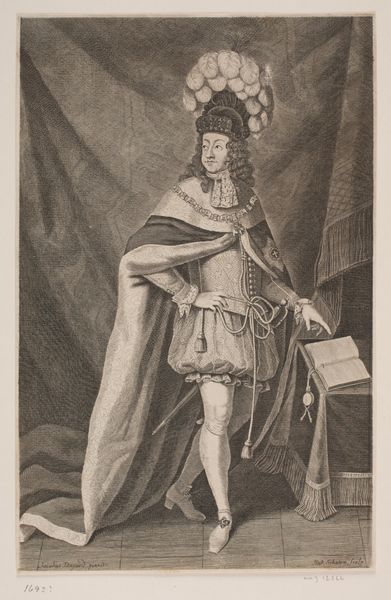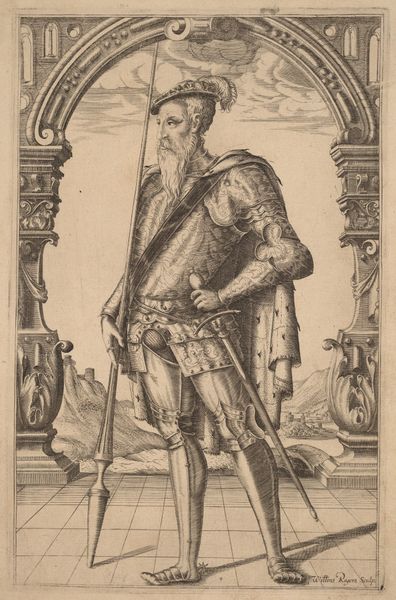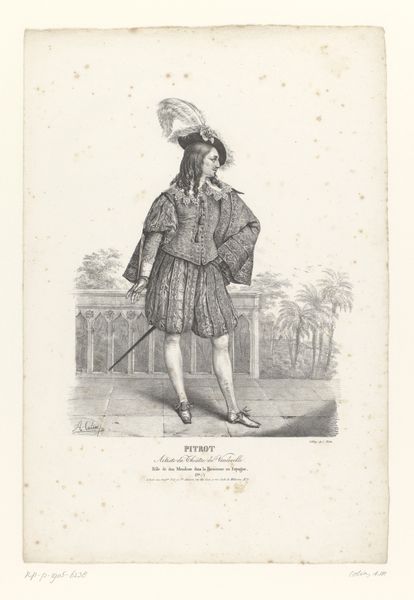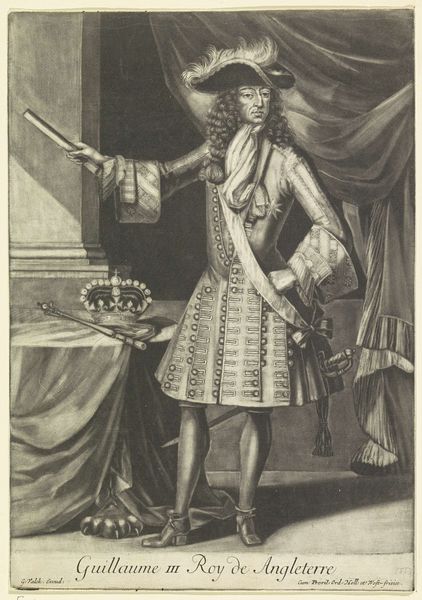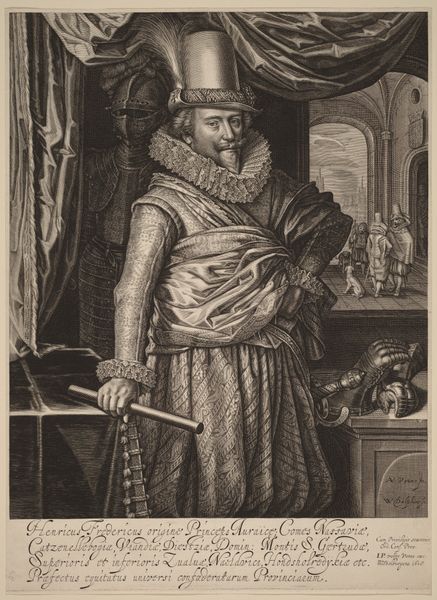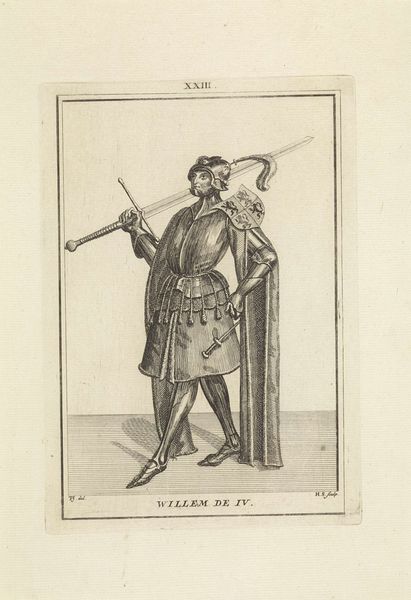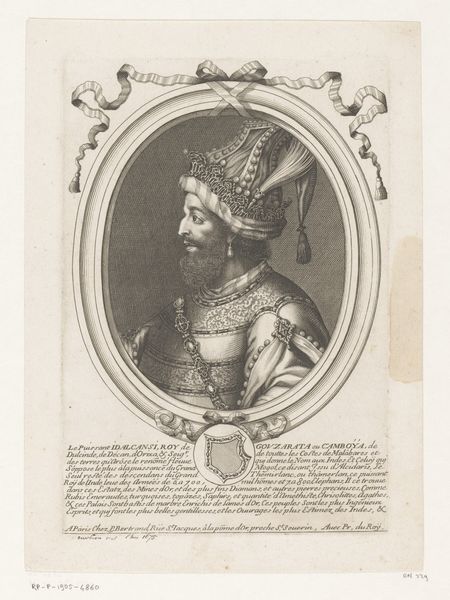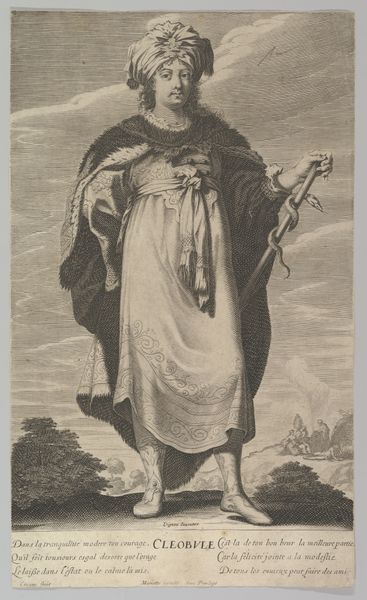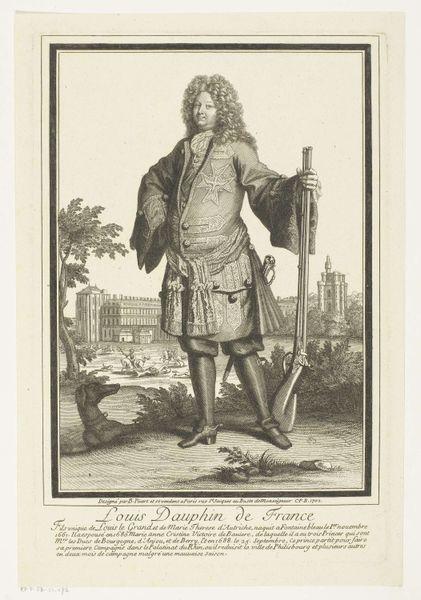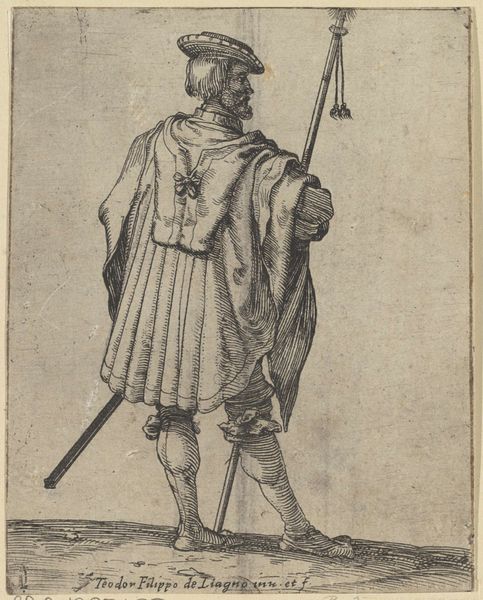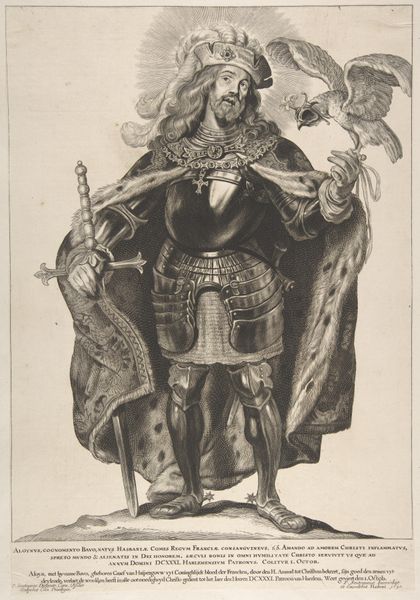
print, engraving
#
portrait
#
baroque
# print
#
history-painting
#
engraving
#
sword
Dimensions: height 396 mm, width 262 mm
Copyright: Rijks Museum: Open Domain
Curator: This print, dating from before 1702, depicts "H. Bavo met een valk op zijn hand," or Saint Bavo with a falcon, and is the work of Nicolaes van Lijnhoven. It's an engraving, demonstrating a portrait style rooted in the Baroque period. Editor: There’s something unsettling about it. The intense, almost aggressive direct gaze, combined with the softness implied by the halo-like radiating lines, create a really striking contrast. The falcon adds an unexpected note of fragility. Curator: Indeed. Saint Bavo's visual iconography is intriguing. The falcon often represents nobility and perhaps the idea of untamed spirit brought into service of a higher calling. Bavo himself, before his conversion, was a soldier, suggesting a transformation. And consider the sword he is holding. Editor: That sword...It’s less a weapon here and more a symbol, perhaps of power relinquished. I think about the history of relinquishing power, considering Bavo's commitment to distributing his wealth to the poor, a rejection of earthly status during a time when societal structures were incredibly rigid. Was this act perceived as revolutionary in its time? Curator: I think that's precisely where its enduring appeal lies. The imagery speaks to renunciation and redemption, potent and universal themes. The radiant light emanates outward, surrounding him like a numbus, typical for the visual hagiography celebrating sainthood. Consider also that underneath the depiction there is Latin scripture – likely meant to remind people of the details of his saintly acts. Editor: How might the symbol of the falcon interact with issues of class? Was Saint Bavo exceptional or did his hagiography function more broadly, shaping behavioral ideals during the Baroque? Does the depiction of such profound personal transformation ultimately serve to preserve or to challenge the existing social order? Curator: A powerful question, really highlighting art's ambiguous function. He could serve as a call to action or conversely, become just another symbol in reinforcing existing hierarchies. I will have to consider this artwork from that point of view now as well. Editor: Precisely! We carry historical memory through symbols that we need to continue deconstructing. Curator: Right you are. Art offers continuity but invites re-interpretation and new inquiry.
Comments
No comments
Be the first to comment and join the conversation on the ultimate creative platform.
